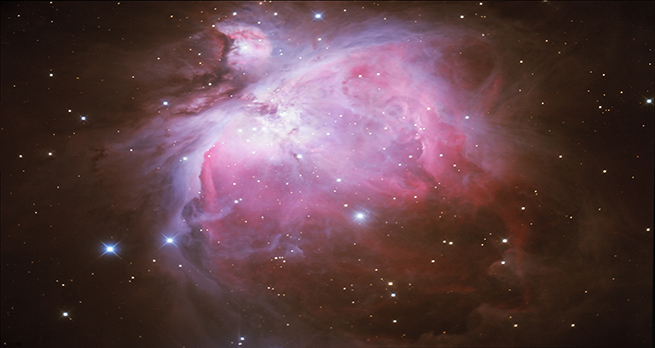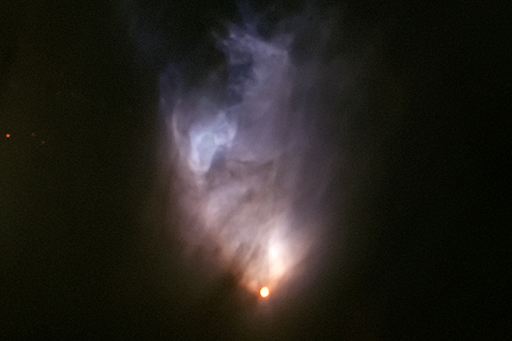2.1.8 Protostar
The cloud clumps heat up as they collapse and also begin to spin more rapidly.
As they spin more rapidly, they change their shape, becoming flatter and more disc-like. Material falling onto the central protostar now passes through a flattened region surrounding it called an accretion disc.
Figure 8 shows a small region of Orion, where a hot young protostar is picked out by the light it is radiating at infrared wavelengths.
At the same time, as material falls onto the equatorial regions of the protostar, powerful jets of material are ejected from its poles. Astronomers are currently unsure of the detailed processes that cause these jets, but their effect is to remove both material and energy from the protostar.
Eventually, the core of the protostar will become so hot that nuclear fusion reactions can begin and a new star is born.
This whole process is surprisingly rapid and is thought to be complete within about 100 million years for the lowest mass stars. More massive protostars have a greater gravitational attraction, so material is pulled onto them at a much higher rate, so more massive stars form more quickly. Stars with masses more than 15 times that of the Sun form in only about 100,000 years.
In the next section, you will be taking a photograph of Orion.

